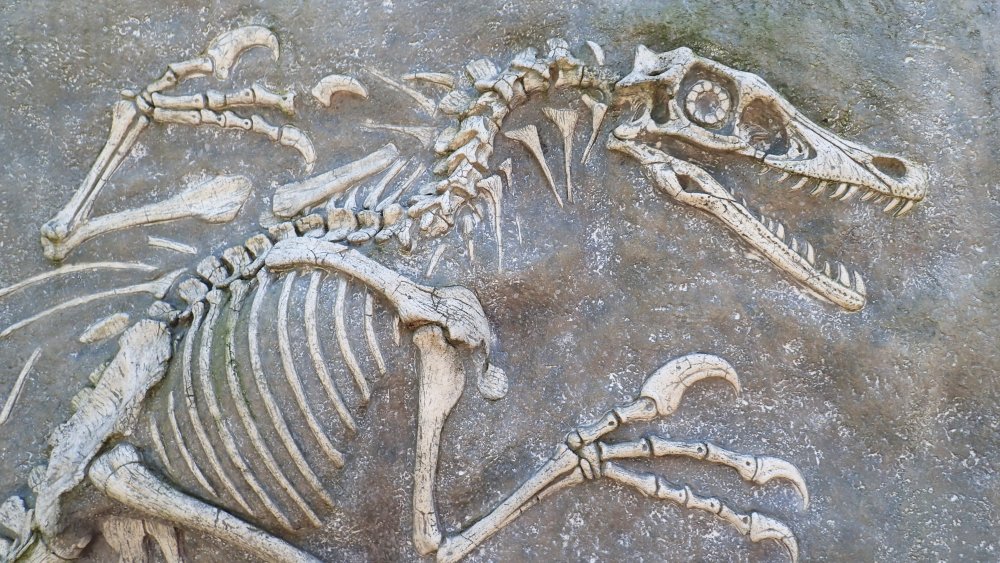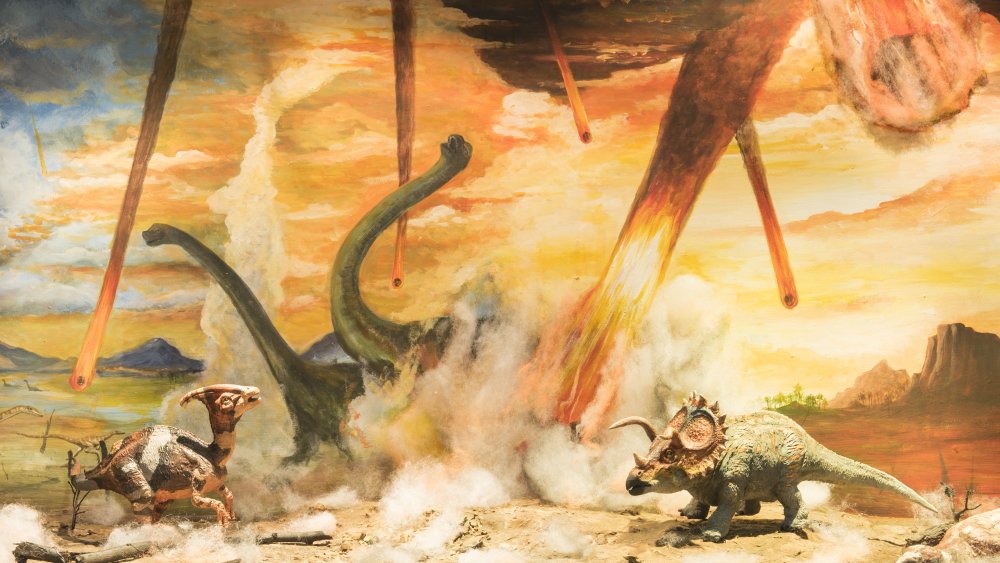Fossil Of 67-Million-Year-Old Raptor Found In New Mexico
The origin of life is one of the great scientific mysteries yet to be solved, and when it comes to dinosaurs, so is the origin of death. Scientists have debated for ages how the terrible thunder lizards met their terrible end. Perhaps the greatest explanation was mass constipation, which — as detailed in the book After the Dinosaurs — experts posited to have resulted from herbivorous dinosaurs munching on hard-to-digest flowering plants that emerged 65 million years ago. But as time passed and better evidence accumulated, that theory went the way of the dinosaurs.
One of the most widely adopted explanations is that an asteroid rained cataclysmic extinction onto the dinosaurs, but some experts insist that the asteroid simply accelerated the inevitable. For instance, in 2016, the Proceedings from the National Academy of Sciences published a statistical analysis indicating that dinos began dying off in significant quantities tens of millions of years before the asteroid finished the job. However, per the Independent, in 2019, researchers at the Imperial College of London looked at the North American fossil record and concluded that "Dinosaurs were likely not doomed to extinction until the end of the Cretaceous, when the asteroid hit." Now, the newly discovered remains of a raptor have added more fuel to the fire of scientific conflict.
Bones of contention
Fans of Jurassic Park are well-acquainted with raptors of the "veloci" variety. But that's not what paleontologists dug up in New Mexico, explains the Guardian. Instead, it seems they stumbled across 20 bones belonging to a "cousin" of the velociraptor. Named Dineobellator notohesperus after the native Navajo people of the region, this raptor likely reached high velocities like its more famous cousin but boasted a different build.
University of Pennsylvania researcher Dr. Steven Jasinski explained that among other things, "The upper arm bone has a very distinct angle in it, and basically what that means is that muscles attaching there would have been more efficient than other" dinosaurs in that family. Its unique spinal alignment gave it a mobile tail, which it could whip around while chasing meandering prey. The bones are 67 million years old, which some experts interpret to mean that a variety of raptors was thriving when the doomsday asteroid rained on their parade 66 million years ago. If their extrapolation is accurate, it puts a dent in the idea that dinosaurs were on life support before the cosmos pulled the plug.

